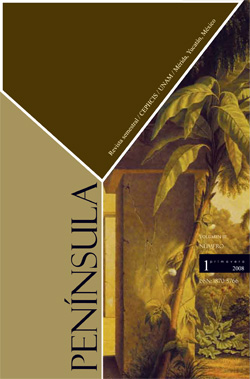Trayectoria de los centros de salud europeos y primeras luces de la medicina moderna en el Yucatán colonial
Contenido principal del artículo
Resumen
Con los conquistadores llegaron nuevos métodos y elementos curativos que se sumaron a las alternativas que ofrecía la península de Yucatán a quienes las aceptaran y tuvieran posibilidades de obtenerlas. Éstas incluían desde yerbas, animales y minerales nativos aplicados en casa de un curandero de sangre indígena o negra, hasta productos de otras partes de América o trasatlánticos, adquiridos en una botica y brindados por un religioso o galeno en un hospital con normas europeas; centros que por lo general no fueron aceptados por los mayas. Las plantas medicinales locales adquiridas con la explotación de la mano de obra indígena enriquecieron los bolsillos de los españoles, que aprovecharon su demanda. A finales de la Colonia la terapéutica galeno-hipocrática, dominante durante tantos siglos en Europa, empezó a ser cuestionada por los médicos ilustrados, lo cual llevaría a América a vislumbrar el inicio de la medicina moderna.
Descargas
Los datos de descargas todavía no están disponibles.
Detalles del artículo
Cómo citar
Chávez Guzmán, M. (2009). Trayectoria de los centros de salud europeos y primeras luces de la medicina moderna en el Yucatán colonial. Península, 3(1). https://doi.org/10.22201/cephcis.25942743e.2008.3.1.44350
Citas en Dimensions Service
Universidad Nacional Autónoma de México (UNAM), todos los derechos reservados 2013-2013.
